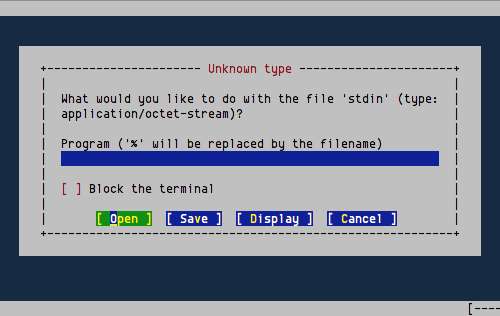
1 tcarrigan tcarrigan 17 Aug 30 11:59 soft_link_test I then create a soft link to that file at /tmp/soft_link_new: demo]$ ln -s /home/tcarrigan/demo/soft_link_test demo]$ ls -l soft_link_test /tmp/soft_link_new In the example below, I create a new file at /home/tcarrigan/demo/soft_link_test with the file content soft Hello world. Ln -s (file path you want to point to) (new file path) I use the ln -s command and the following syntax: By definition, a soft link is not a standard file, but a special file that points to an existing file. Soft linksĬommonly referred to as symbolic links, soft links link together non-regular and regular files.

They only work when the new hard link exists on the same filesystem as the original. Also, a hard link cannot span multiple filesystems. For starters, they can only be created for regular files (not directories or special files). While useful, there are some limitations to what hard links can do.

Elinks command full#
If you want more information on inodes, read my full article here. The shared inode number is 2730074, meaning these files are identical data. 2 tcarrigan tcarrigan 12 Aug 29 14:27 /tmp/link_new Files that are hard-linked together share the same inode number. If you find two files with identical properties but are unsure if they are hard-linked, use the ls -i command to view the inode number. The data is only removed from your drive when all links to the data have been removed.

If the original file is deleted, the data still exists under the secondary hard link. The permissions, link count, ownership, timestamps, and file content are the exact same. When changes are made to one filename, the other reflects those changes. Most notably, if I cat the new file's contents, it displays the original data. The link count has also been changed ( 2). The primary difference here is the filename.

2 tcarrigan tcarrigan 12 Aug 29 14:27 link_test Now when I look at my filesystem, I see both hard links. The syntax is ln (original file path) (new file path). Next, I create a new hard link in /tmp to the exact same file using the following command: demo]$ ln link_test /tmp/link_new 1 tcarrigan tcarrigan 12 Aug 29 14:27 link_test For example, if I create file /home/tcarrigan/demo/link_test and write hello world in the file, I have a single hard link between the file name link_test and the file content hello world. This means that the two filenames, though different, point to identical data. Let's discuss these.įirst, you create a new filename pointing to the exact same data as the old filename. Creating an additional hard link to a file means a few different things. The link is between the filename and the actual data stored on the filesystem. Every file on the Linux filesystem starts with a single hard link. The concept of a hard link is the most basic we will discuss today. If nothing else, I take you through the syntax to create these links (which many people find difficult to remember). You may realize that this concept, which is often a struggle for sysadmins, is quite simple. I want to talk about hard links and soft (symbolic) links in the most basic terms possible. Sometimes, it only takes someone explaining the concept in "plain English," aka layman's terms. This is a frustrating feeling, but it is also one that often is easily remedied. Have you ever been familiar with something, worked around it, but not fully understood its concepts? I feel like that happens to me more than most people. Linux system administration skills assessment.A guide to installing applications on Linux.
Elinks command download#
Download RHEL 9 at no charge through the Red Hat Developer program.


 0 kommentar(er)
0 kommentar(er)
